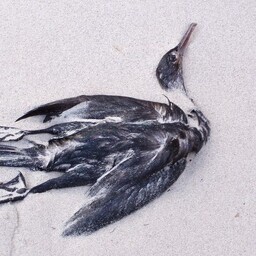Avian flu is usually a mild disease for wild birds. Wild birds are immune or suffer from the disease mildly. However, domestic birds have weaker immunity, which is why the virus can quickly become stronger and more dangerous for them.
The virus spreads rapidly during the migration period of birds. Additionally, the global bird trade also facilitates the spread of diseases. The H5 avian flu virus first emerged in China in 1996 and has since spread worldwide.
The virus has caused mass mortality among cormorants. For example, in 2021-2022, 15,900 Cape cormorants died in South Africa. In Europe, the virus has appeared repeatedly, most recently in 2021 and 2022. In the Baltic Sea region, at least 1,700 cormorants died in 2021 and 2022.
The virus also infects other birds, such as black-headed gulls and white-tailed eagles. For example, in Germany, in one black-headed gull colony, only 20 chicks out of 424 nests achieved the ability to fly. The spread of the virus is more likely in colonies where nests are closer together.
After the avian flu waves of 2021 and 2022, the colonies have grown again. This may indicate that birds have developed immunity, but more research is needed to confirm this.

